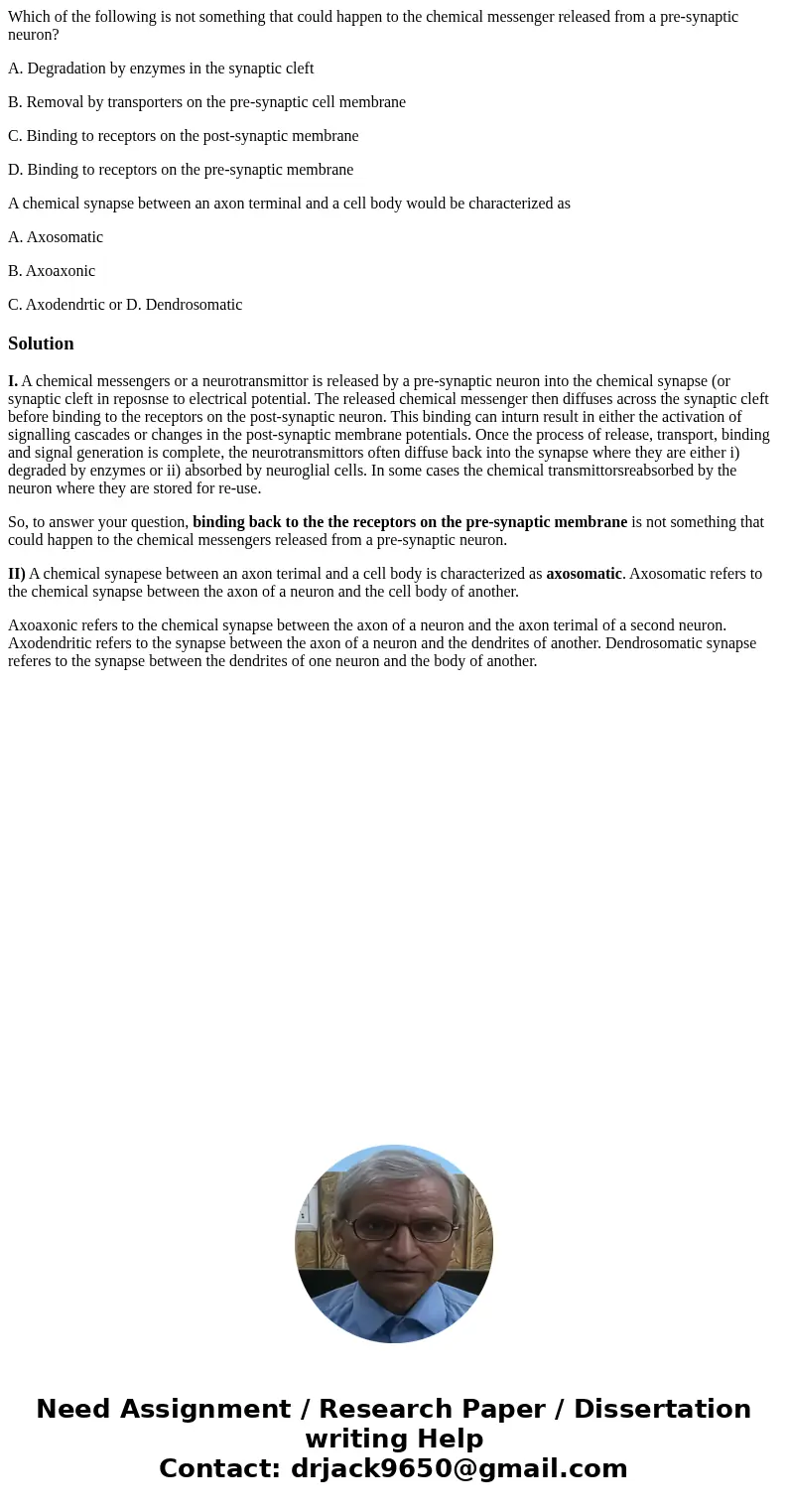Which of the following is not something that could happen to
Which of the following is not something that could happen to the chemical messenger released from a pre-synaptic neuron?
A. Degradation by enzymes in the synaptic cleft
B. Removal by transporters on the pre-synaptic cell membrane
C. Binding to receptors on the post-synaptic membrane
D. Binding to receptors on the pre-synaptic membrane
A chemical synapse between an axon terminal and a cell body would be characterized as
A. Axosomatic
B. Axoaxonic
C. Axodendrtic or D. Dendrosomatic
Solution
I. A chemical messengers or a neurotransmittor is released by a pre-synaptic neuron into the chemical synapse (or synaptic cleft in reposnse to electrical potential. The released chemical messenger then diffuses across the synaptic cleft before binding to the receptors on the post-synaptic neuron. This binding can inturn result in either the activation of signalling cascades or changes in the post-synaptic membrane potentials. Once the process of release, transport, binding and signal generation is complete, the neurotransmittors often diffuse back into the synapse where they are either i) degraded by enzymes or ii) absorbed by neuroglial cells. In some cases the chemical transmittorsreabsorbed by the neuron where they are stored for re-use.
So, to answer your question, binding back to the the receptors on the pre-synaptic membrane is not something that could happen to the chemical messengers released from a pre-synaptic neuron.
II) A chemical synapese between an axon terimal and a cell body is characterized as axosomatic. Axosomatic refers to the chemical synapse between the axon of a neuron and the cell body of another.
Axoaxonic refers to the chemical synapse between the axon of a neuron and the axon terimal of a second neuron. Axodendritic refers to the synapse between the axon of a neuron and the dendrites of another. Dendrosomatic synapse referes to the synapse between the dendrites of one neuron and the body of another.

 Homework Sourse
Homework Sourse